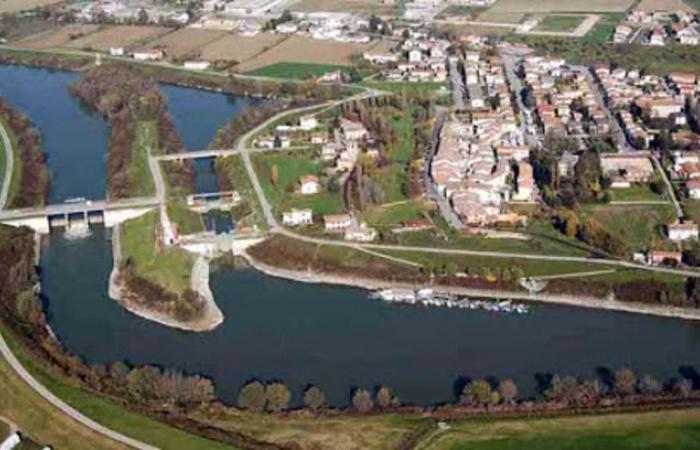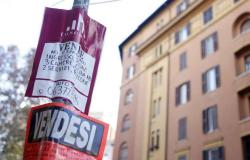
Mantua is the new capital of the Po. Goodbye to Cremonese ambitions. With all due respect to history, to Fiorino Soldi (and his beautiful book “Cremona Capitale del Po”), to centuries of illusions and hopes (also linked to the navigable canal up to Milan) and to the pioneers of river navigation (Lombardi, Genzini, Dolfini, Della Luna, Binda Beschi etc.). The port of Mantua will have a European significance and will also be the center for sorting goods from Northern Europe towards the Mediterranean. A new railway, a motorway connection with Brenner and the strengthening of the Tartaro-Fissero-Canalbianco canal will make it the point of reference for the transport of containers by water and even the Hydrogen valley of the imminent future planned right at the port of Valdaro. Cremona? Not received. The lands around its port now represent only an industrial area and the navigable canal a paradise only for fishermen.
A crowded conference was held on Thursday in Mantua on the topic ofblue highway, a resource perhaps not unique of its kind but certainly rare and precious, certainly still too little used compared to the potential it could express. The Fissero Tartaro Canalbianco waterway is a formidable tool that the Mantua and Rovigotta industry are exploiting more and more, but still decidedly less than they could, considering the benefits on both an economic and environmental level.
This is stated in the study by The European House – Ambrosetti for Confindustria Mantua and Confindustria Veneto Est, presented at the industrialists’ headquarters in the city. The report demonstrates on the one hand how the navigable route of the Po river – the only one capable of guaranteeing navigability for commercial purposes for 365 days a year – accounts for only 0.1% of the volumes of goods transported in Italy, where road transport seems unchangeable, compared to the 20% European average. On the other hand, thanks to the new funds allocated and the opening of the connection with Chioggia, goods passing through the waterway system have increased by 160% since 2015, demonstrating the fact that something also moves on water.
The results, in the end, can be seen. The extended supply chain of the Northern Italian waterway system involves 25 economic macro-sectors and generates an added value of almost 500 million euros for the territory (around 3% of the GDP of the provinces of Rovigo and Mantua). The effective implementation of planned investments could generate net economic benefits of 1.4 billion by 2030 attributable to Italian navigable networks.
Not only economic benefits, but also environmental ones: it is estimated that a 25% growth in community waterway transport would favor the achievement of European decarbonisation targets.
The Province of Mantua, in this case, hosts 7 public ports and 6 private ports used for the river transport of goods; the Mantua Port System is the natural terminal of the Fissero-Tartaro-Canalbianco-Po di Levante waterway, in particular in the Porto Valdaro area.
“We are talking – states Benedetta Brioschi of The European House – Ambrosetti – of a sector that involves, from upstream to downstream, 25 sectors and sub-sectors of different economic activities with a very significant spin-off. We have calculated an economic multiplier of 3.7: every euro of added value generated by the waterway produces a further 2.7 in the rest of the economy due to a direct and indirect impact on the territories involved”.
This peculiar system of commercial communications on water, of which the Mantua area acts in some way as a pivot, can therefore play a key role in the development of the logistics system and, consequently, of the manufacturing industry. Only, however, if regulatory and infrastructural bottlenecks are overcome and a medium-long term plan for the waterway sector is pursued: overcoming regulatory critical issues, additional public incentives for private investments (e.g. bonuses on “green” fuel), digitalisation, support for industrial districts along the navigable coast, such as the Hydrogen Valley of Valdaro and Porto Marghera.
“We believe a lot in river auctions and are investing a lot – states the Director of Territorial Planning and Navigation of the Province Alessandro Gatti – from an infrastructural and strategic point of view. Now it is a question of teaming up between Lombard and Venetian authorities because, just as our Fissero Tartaro canal is a network within European water networks, in the same way by networking with other ports we can achieve stronger development in this system that enters the Po-Veneto plain and can allow for an interchange of rubber and iron, making trimodality more sustainable”.
“With this study – declares the president of Confindustria Mantua, Fabio Viani – we wanted to highlight the opportunities offered by the development of the river network, especially in the Lombard and Veneto regions. The potential is enormous, it is clear that we are worried about all the obstacles that the work may encounter in its creation process. Today we propose a permanent table to be shared with the other stakeholders who have shared the importance of this study (Confindustria Veneto Est and the Provinces of Mantua and Rovigo) so that we can observe how the investments already allocated will find shape and implementation and what the steps necessary to give full implementation”.
“We fight to remove bottlenecks – states the regional councilor for economic development Guido Guidesi – because we believe very much in this opportunity for further competitiveness for our companies. We are convinced that everything represented by this study can be very useful and can help everyone team up and achieve the objectives we have set for ourselves. We are at an advanced stage with the Government, finally. We hope to close it as soon as possible but for us the Special Logistics Zone certification, for which the discussion channels are open with the Presidency of the Council, is the first step to create not only better opportunities to compete with existing companies, but to be attractive to new investments”.
What, however, is the development for Mantua? “We are aware of the potential of our infrastructures – says the Councilor for the Environment Andrea Murari – and of the need to make them increasingly competitive, but we also know that in the future water will increasingly be the distinctive character of our intermodality which will make us unique compared to other offers, and will therefore be the key element of our competitiveness. I always say that today we are already extraordinarily competitive compared to the alternatives, but we will be even more so in the future and therefore those who need to invest come to do so, if possible, in Mantua”.
The port of Mantua and the sunset over that of Cremona




